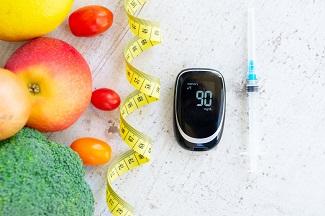On Wound Care and Diets
December 12, 2019
While I was providing foot care to a patient, one of my coworkers overheard me advising the patient that she will need a lot more protein to heal her wound, and some changes to her diet will be necessary and therefore tighter control of her blood glucose and improved hemoglobin A1c. Later, I was approached by a coworker who told me: "Because you are not a Registered Dietitian, you cannot discuss dietary needs with the patient." I disagree.
Wound Healing Questions
One of the questions that I have learned to expect from patients is: "How long is it going to take to heal this wound?" This question is like opening a can of worms; it is the entry way for an extensive conversation and many opportunities for education. Yet, I fear that many patients are not ready to hear the truth, nor are they able to make these changes on their own because these modifications require not only financial fluidity and mobility, but also the ability and willingness to implement some behavioral changes.
Pressure Injury Healing and Oral Nutritional Supplements Enriched With Arginine
Because I cannot give them a definitive period of time as a result of their complex situation and their multiple comorbidities, I find the challenge is in trying to find out what it is that the patient is actually asking. For some, it is the fear of a restrictive diet or the cost of and time investment in dressing changes. For many patients your assessment will guide you into directing the question back to them, as in "How long did it take you to heal from the amputation of your toes?" or "What did you do to heal this or that ulcer?"
Where Diet Comes Into Play
It is disheartening to see the dietary choices for the patients in the hospital menu guide. Check one out you will be amazed. It appears that the patient is being made dependent on a high-carbohydrate diet because a choice with a low glycemic index is not available. Three to four carbs per meal is acceptable, and if you wish to have a bit of dessert, just use the sliding scale by reducing to one to three carbs per day, and adjust your glucose level. Abstaining from eating carbs for a meal or two is considered taboo because the patient may faint, given that so much insulin was taken already before the prior meal. I had a physical examination in March, where I was caught by surprise when the doctor told me I needed to take a blood pressure medication and start taking a statin. Since then, I have been totally consumed, almost obsessed, with diets.
I have been learning about diets, the food pyramid, MyPlate, the recommended dietary allowance (RDA), and the many diets out there, from the Adapt movement to the vegan world. It is scary for me. I can only imagine how scary it is for a patient with diabetes who is not aware of or able to understand results of a clinical study or who cannot decipher for herself what is best and suitable to her and just allows herself to be guided by the well-intentioned dietitian or general practitioner who is practicing medicine by following guidelines and not evidence-based medicine. The subject is extensive, even alarming, once you dig into it. I do not have diabetes, nor do I have issues with high blood pressure at this time; I am playing with my cholesterol and embarked on a ketogenic diet. Carbs were reduced to 10g a day in the form of a bit of daily dark chocolate! Time will tell at my next physical. So far, I see no reason to go back to the standard American diet.
Conclusion
Yet, what I told my worker is that yes, as a CWOC nurse I am qualified to discuss dietary concerns with my patient. I learned the importance of protein in wound healing and tissue building while in school. I learned that it takes 1.5g/kg to nourish a body with a wound and that micronutrients and macronutrients are important, as is maintaining tight glucose hemoglobin A1c control for patients with diabetes. As nurses and providers, we are perfectly poised to work together and be part of the health care team to address the complex issues of nutrition, wound healing, and helping our patient navigate the hospital menu. I will leave with this: "Every careful observer of the sick will agree in this that thousands of patients are annually starved in the midst of plenty." Florence Nightingale.
About the Author
Fabiola Jimenez is a Wound Ostomy Continence Nurse and Adult Clinical Nurse Specialist at Detroit Medical Center Huron Valley Sinai Hospital. She has been a nurse since 1988, when she entered the field after graduating from the University of Oklahoma. Throughout her accomplished career, her work has demonstrated a dedication to caring for patients and a lifelong commitment to educating herself and others.
The views and opinions expressed in this content are solely those of the contributor, and do not represent the views of WoundSource, HMP Global, its affiliates, or subsidiary companies.












